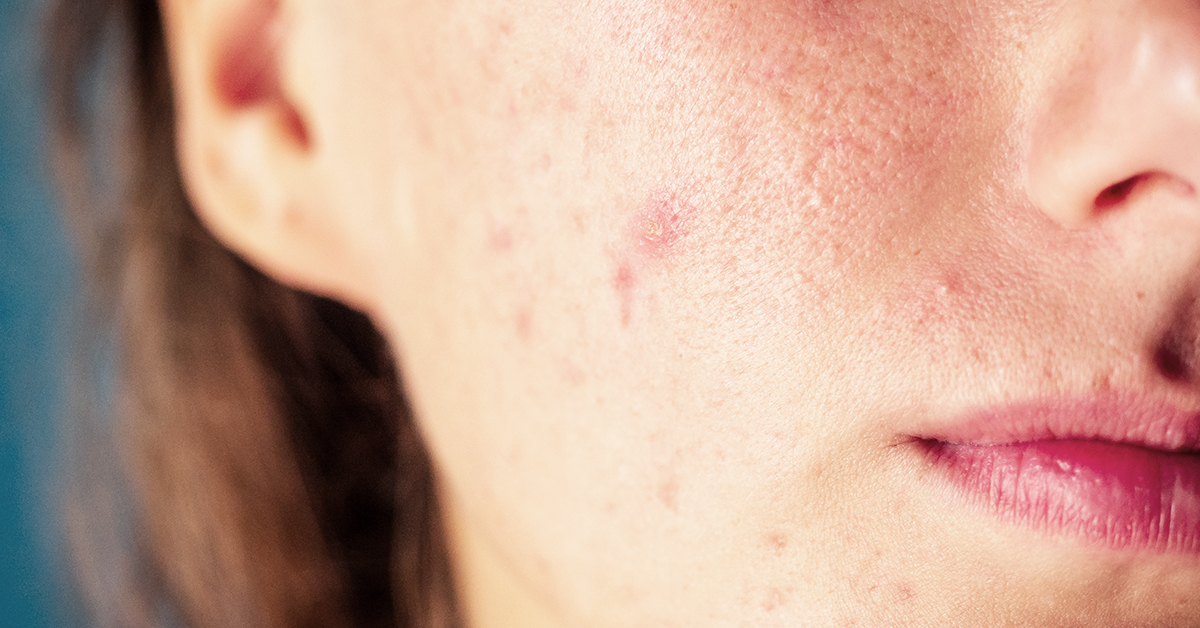Celiac Disease

WHAT IS CELIAC DISEASE?
Celiac disease, also known as celiac sprue, is a lifelong, potentially life-threatening autoimmune disease which can only be treated by eliminating gluten from the diet. Gluten is a protein found in wheat, barley, and rye.
When people with celiac disease ingest anything containing gluten, the mucosal lining of their intestine becomes inflamed. As a result of the inflammation, the mucosal lining is unable to do the job of absorbing nutrients from food.
Complications from celiac disease range from mild to severe. The prognosis of celiac disease depends on the complete elimination of gluten from the diet and on the ability of the mucosal lining to recover.
WHAT ARE THE SYMPTOMS OF CELIAC DISEASE?

The symptoms of celiac disease can be non-existent, mild, or severe.
In adults, symptoms are often mistaken for irritable bowel syndrome and may include:
- Diarrhea or loose stool
- Constipation
- Flatulence
- Rumbling or gurgling abdomen
- Abdominal pain
- Steatorrhea (fatty or greasy stool)
- Particularly bad-smelling stool
- Stool that floats in the toilet
In infants, celiac disease is usually diagnosed around 1-6 months after they begin to eat foods containing gluten. Symptoms may include:
- Diarrhea (diarrhea is the ‘classic’ symptom in babies)
- Swollen belly
- Vomiting
- Anemia
- Irritability
- Lack of interest in feedings
- Failure to gain weight
In children over the age of 2, diarrhea is less common, but stool is still loose.
In adolescents, gastrointestinal signs tend to be minimal. Diagnosis is often delayed.
WHAT ARE THE RISK FACTORS FOR DEVELOPING CELIAC DISEASE?
The primary risk factor is having a genetic mutation for celiac disease in addition to being exposed to an environmental factor. Approximately 30% of all people have the mutation that causes celiac disease, but only around 1% of all people are estimated to actually have the disease.

Scientists haven’t yet identified the environmental factor that triggers celiac disease in people with the mutation, and they continue to look for explanations such as:
- Having had an infection of the digestive system in early childhood.
- Having eaten gluten before the age of 3 months.
- Not having been breastfed when gluten was first introduced.
- Having health conditions which often co-occur with celiac disease. It is unclear what the link is between celiac disease and those conditions, although most are also autoimmune.
Family history:
People who have a first degree relative with celiac disease have approximately a 10% – 15% chance of developing celiac disease. In identical twins there is a 75% chance that if one twin develops celiac disease the other twin will also develop it.
Geography:
People of northern European descent have the highest prevalence of celiac disease, although celiac disease is becoming more common in Asia and Africa.
Gender assigned at birth:
Slightly more females than males have celiac disease.
In someone with a genetic predisposition to celiac disease, the disease can develop at any age if gluten is ingested. Unfortunately, because symptoms of celiac disease can mimic many other conditions, or may not seem serious enough to see the doctor, most people with celiac disease are undiagnosed.
WHAT ARE THE COMPLICATIONS OF UNTREATED CELIAC DISEASE?
There are many complications of untreated celiac disease, most of which result from nutrient deficiencies. Complications of celiac disease vary depending on age, severity of disease, and the lengths of time before diagnosis and until recovery.
In infants, the most dangerous complication is dehydration as a result of severe diarrhea. Dehydration from diarrhea causes a depletion of electrolytes. Electrolyte depletion in infants can cause heart arrhythmias or seizures.

In children, complications can include:
- Short stature
- Delayed puberty
- Learning deficiencies
- Anemia
- Dehydration and electrolyte imbalances from severe diarrhea

In adolescence, complications of celiac disease can be mistaken for classic teenage problems, such as:
- Lack of energy
- Behavior issues
- Skin problems
- Mood swings
- Depression

In adults, complications can include:
- Anemia
- Muscle weakness
- Fatigue.
- Osteopenia — reduced bone density, or osteoporosis — weakened, frail bones
- Neurological problems including numbness, loss of balance, loss of coordination, difficulty speaking, or seizures.
- General malnutrition
- Tendency to bleed easily
- Weight loss. Not everyone with celiac disease loses weight. Some people compensate for the lost nutrient absorption by eating more food.
- Development of lactose intolerance`
- Dermatitis herpetiformis, an itchy, blistering skin condition.
- Hormonal disorders. In women, hormonal disorders can result in amenorrhea (not having menstrual periods) or infertility. In men, hormonal disorders can result in impotence and infertility.
- Poor pregnancy outcomes. Women with untreated celiac disease have a higher risk of miscarriage, of delivering a low birthweight infant, and of giving birth to an infant with congenital malformations.
- Cancer. The risk of developing certain cancers is increased.
For more information on nutrient deficiencies see Halza’s articles on Vitamin D.
WHAT DISTINCT MEDICAL CONDITIONS CO-OCCUR WITH CELIAC DISEASE?
In addition to conditions resulting directly from complications of celiac disease, numerous conditions are known to co-occur in people with celiac disease. These include:
- Autoimmune hepatitis
- Hashimoto’s thyroiditis
- Multiple Sclerosis
- Addison disease
- Sjogren syndrome
- Type 1 diabetes
- Turner Syndrome
- Down Syndrome
TREATMENT
Currently the only treatment for celiac disease is lifelong adherence to a completely gluten-free diet. For people who don’t improve on a gluten-free diet, corticosteroid medication can be helpful. However, long-term corticosteroid use is unadvisable unless absolutely necessary.
WHAT IS A GLUTEN-FREE DIET?

A gluten-free diet is a diet that is virtually completely free of gluten. In order to be labeled gluten free in the U.S., Europe and Canada, ingredients can contain no more than 20 parts of gluten per million.
People with celiac disease must be extremely careful when eating food described as gluten-free in homes, bakeries or restaurants. Food labeled gluten free on a menu is easily cross-contaminated if full gluten-free precautions are not taken. For example, wheat flour can stay airborne after being sifted or mixed and will eventually settle unseen on kitchenware such as cutting boards and utensils. Food described as gluten-free might be deep-fried in oil that was previously used to fry something with gluten. Gluten-free bread might be toasted in the same toaster used for wheat bread.
There are many ingredients and products that are partly made from wheat, barley, and rye but don’t use those three words. Some of the words to look for include:
- Triticale
- Brewer’s yeast
- Malt extract
- Malt flavoring
- Malt vinegar
- Malted milk
- Graham flour
- Seitan
It is extremely important to know the ‘hidden’ sources of gluten and to always read the ingredient label on packaged foods. For example, although corn flakes and rice cereal sound as though they are gluten free, many brands contain malt extract or are manufactured on gluten-contaminated equipment.
Additional products that people might ingest without question include communion wafers, some medications, toothpastes, lip moisturizers or color, and vitamin supplements.
PROGNOSIS

If a gluten-free diet is maintained, symptoms will resolve – sometimes within weeks. In up to 95% of children who are diagnosed early in the course of the disease, the mucosal lining of the intestinal tract will recover within 2 years. The need to follow a gluten-free diet, however, is lifelong.
In adults, recovery from symptoms can take longer. Most adults can achieve symptomatic relief by following a gluten-free diet, but the mucosal lining can suffer permanent damage. The exact correlation between symptomatic recovery and the risk of long-term complications such as cancer is unknown.
Although 95% of people will eventually recover, a gluten-free diet is extremely difficult to maintain. Therefore, up to 20% of people diagnosed with celiac disease will have persistent or recurrent symptoms.
IS CELIAC DISEASE THE SAME THING AS GLUTEN INTOLERANCE/GLUTEN SENSITIVITY?
No. After eating gluten, people with gluten intolerance might have nausea, gas, headaches, fatigue, difficulty concentrating, or several other symptoms. However, they don’t have an autoimmune reaction in which the body attacks its own tissues. Eating gluten may cause them discomfort but does not cause long-term or permanent damage. Around 6% of the U.S. population is intolerant of gluten.
If you have symptoms of celiac disease, see your doctor. Many conditions have symptoms that overlap with celiac disease, and it is important to have the correct diagnosis. If you do have celiac disease, be sure to have a consultation with a licensed dietician. They can help you find substitutes for gluten-containing foods and can help make sure that you are getting all of the nutrients you need. Following a gluten-free diet is challenging with celiac disease, but protecting your health makes it worth the effort.
HOW HALZA CAN HELP?
Manage your family’s health easily with the Halza app. Store, track & share all of your child’s medical records to have them with you, wherever you go. Monitor your child’s growth and vaccination schedule as well as upload reports and doctor’s notes all with the Halza app. QuickShare a complete overview of you or your child’s health with any attending doctor in seconds, during emergencies or whenever you need.
Simplify your health journey with Halza.